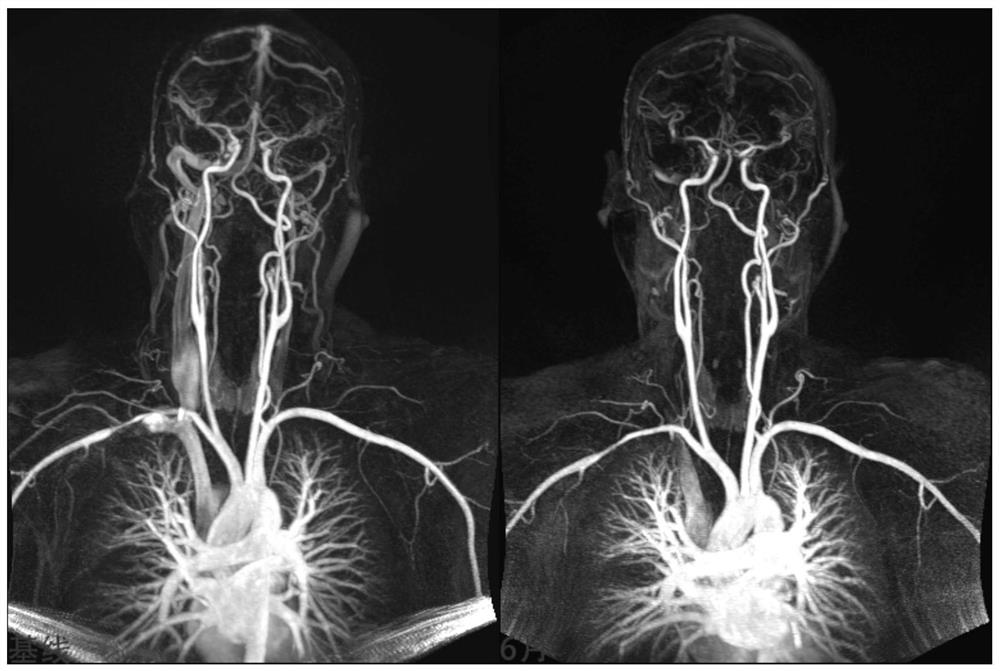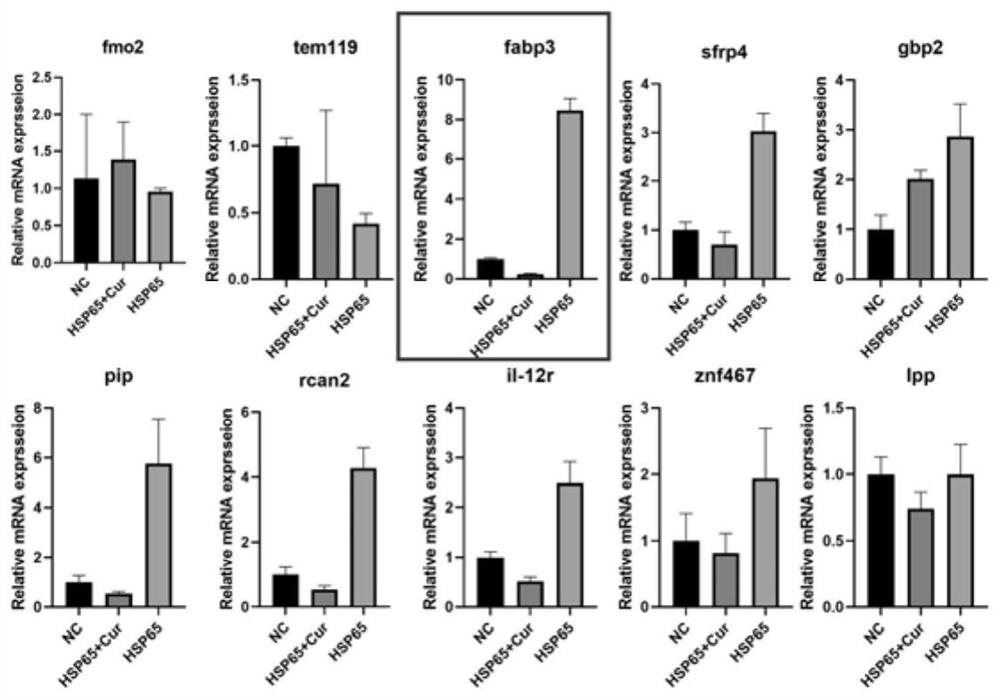Application of FABP3 to takayasu arteritis vascular fibrosis
A technology of FABP3 and Takayasu, which is applied in the field of biomedicine, can solve problems such as dyslipidemia and cardiovascular infection, and achieve the effects of reducing the incidence rate, taking it conveniently, and reducing cardiovascular adverse events
- Summary
- Abstract
- Description
- Claims
- Application Information
AI Technical Summary
Problems solved by technology
Method used
Image
Examples
Embodiment 1
[0056] Curcuma granules (Guangdong Yifang Pharmaceutical Co., Ltd.) were used as adjuvant therapy for patients with Takayasu arteritis. After 6 months, the patient's imaging was stable and some of them improved:
[0057] 18 patients were enrolled in the group combined with adjuvant therapy with turmeric granules (average dose of glucocorticoid 10 mg / day + methotrexate 10-15 mg / week + turmeric granules 60 g / day). The baseline clinical characteristics are shown in Table 1. When compared with the baseline systemic vascular MRA images, 14 cases (78%) were found to be stable; 3 cases (17%) improved, and the baseline and 6-month systemic vascular MRA results of a 40-year-old male patient with Takayasu arteritis were as follows: figure 1 As shown, the stenosis of the right subclavian artery was significantly improved; only 1 case (6%) showed slight progress, indicating that the addition of curcuma granules had a good control effect on vascular disease and fibrosis in patients with Tak...
Embodiment 2
[0062] The differentially expressed gene FABP3 was verified by RNA-Seq screening:
[0063] In order to explore the potential molecular targets of curcumin in controlling vascular fibrosis in Takayasu arteritis, AAF was divided into three groups: ① NC control group ② HSP65 stimulation ③ HSP65 + curcumin three groups, and the total mRNA of each group was sequenced for transcriptome. ① ② Group comparison screened out 812 Differentially expressed genes, ②③ Comparison and screening of 3355 differentially expressed genes, and the intersection of the two parts of the differentially expressed genes, 215 differentially expressed genes were obtained, and the top 10 genes were verified by PCR. The results showed that FABP3 was most significantly up-regulated after HSP65 stimulation , and the down-regulation was most obvious after curcumin treatment, such as image 3 shown.
Embodiment 3
[0065] Adventitial FABP3 expression is closely related to vascular fibrosis in Takayasu arteritis:
[0066] By detecting the expression of FABP3 in the aortic specimens of 12 patients with Takayasu arteritis and 8 healthy controls, it was found that the expression of FABP3 in the affected arterial wall of patients with Takayasu arteritis was higher than that of healthy people, especially in the adventitia with severe fibrosis and thickening. ,Such as Figure 4 shown. In order to explore the relationship between FABP3 and vascular fibrosis, we detected the expression of arterial wall ECMs in patients with Takayasu arteritis and healthy people, and further selected three images randomly under high-power field of view for each patient's film, and calculated and analyzed the positive area with imageJ software (%), taking the average value, and carrying out correlation analysis, the results show that in Takayasu arteritis adventitia, the expression of FABP3 is positively correlate...
PUM
 Login to View More
Login to View More Abstract
Description
Claims
Application Information
 Login to View More
Login to View More - R&D
- Intellectual Property
- Life Sciences
- Materials
- Tech Scout
- Unparalleled Data Quality
- Higher Quality Content
- 60% Fewer Hallucinations
Browse by: Latest US Patents, China's latest patents, Technical Efficacy Thesaurus, Application Domain, Technology Topic, Popular Technical Reports.
© 2025 PatSnap. All rights reserved.Legal|Privacy policy|Modern Slavery Act Transparency Statement|Sitemap|About US| Contact US: help@patsnap.com



